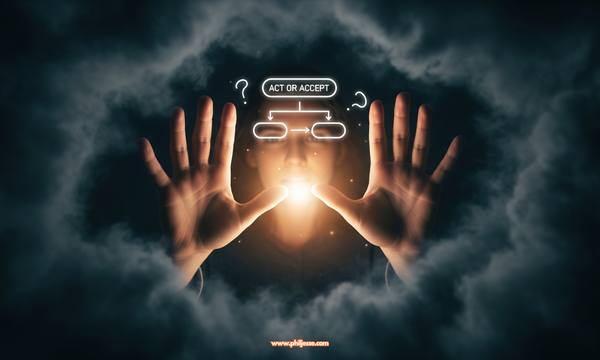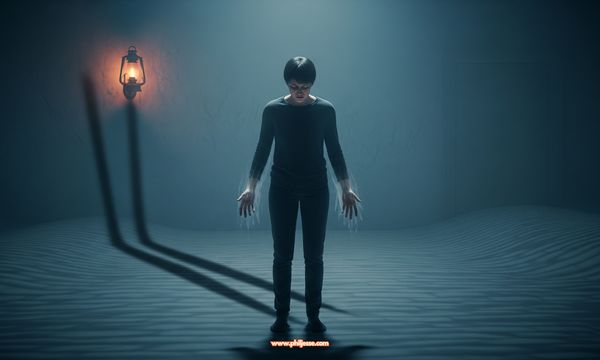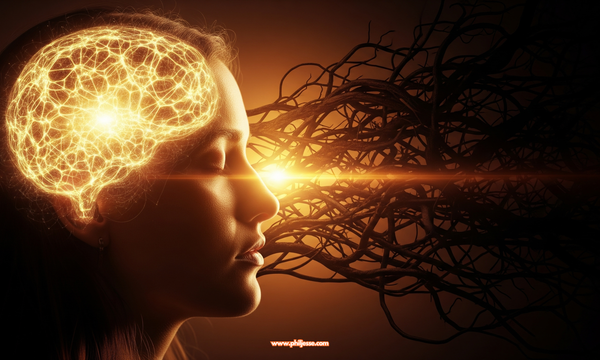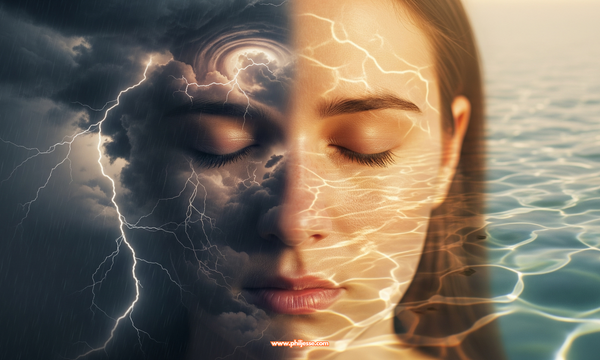The Weather Within: A Philosophical Guide to Understanding Anxiety
This article is for anyone who has ever felt the tightening in their chest, the racing thoughts, or the quiet dread that anxiety can bring. It's a philosophical and practical guide to changing your relationship with anxiety—to move from a place of resistance to a place of resilience.
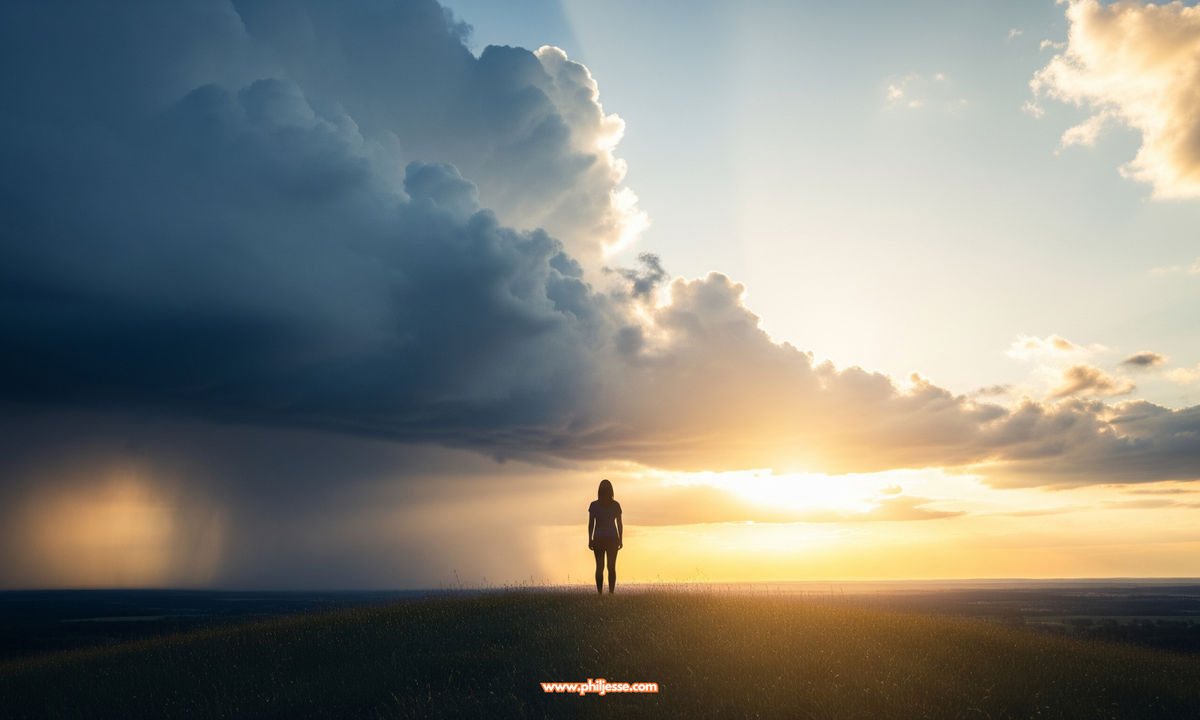
Anxiety has been a quiet companion of mine for much of my life. For years, I tried to outrun it, mask it, or pretend it wasn’t there. It was only when I stopped fighting that I began to understand it. In Manchester, where I live, you learn to live with the rain. You accept it’s a part of the landscape, so you learn to carry an umbrella. You don’t control the weather, but you learn how to navigate it.
What if we could learn to treat anxiety in the same way? Not as a personal failing or a monster to be slain, but as the weather within—an internal climate that we can learn to navigate with skill, compassion, and the right tools.
This article is for anyone who has ever felt the tightening in their chest, the racing thoughts, or the quiet dread that anxiety can bring. It’s for those who feel unseen in their struggle and for those who wish to understand it better. This isn't a guide to “curing” anxiety, because anxiety is part of the human emotional spectrum. Instead, this is an invitation to change your relationship with it—to move from a place of resistance to a place of resilience.
The Storm Inside: What is Anxiety, Really?
On a scientific level, anxiety is a biological inheritance. It’s the body’s natural alarm system—the fight, flight, or freeze response—kicking into gear. When your brain perceives a threat, it floods your system with hormones like adrenaline and cortisol. Your heart rate increases, your breathing quickens, and your muscles tense, preparing you to face danger. This system is brilliant when you’re face-to-face with a genuine threat. But for many of us, this alarm gets stuck in the ‘on’ position, triggered by work deadlines, social situations, or sometimes, nothing at all.
Globally, it's estimated that over 300 million people live with an anxiety disorder. That’s millions of people who understand that anxiety is more than just ‘worrying’. It’s a physical experience—a complex array of feelings that can take root in your chest and stomach. It’s the hum of an engine that never quite turns off. For me, just the word itself can sometimes bring on that familiar tightness. It’s a deep-rooted response, a testament to the profound connection between our minds and bodies. Understanding this is the first step: your anxiety is a real, physiological response. It is not a weakness, and it is not your fault.
My Journey with the Rain
It’s no secret that anxiety has been a constant in my life, a presence that became more noticeable when I stopped masking it with alcohol. For a long time, I didn’t have the language for what I was experiencing. As someone who was late-diagnosed with autism and ADHD, I spent decades trying to make sense of a world that often felt overwhelming. This multifaceted journey, which I explore more on my About page, has been a process of peeling back layers, and with that has come the need to learn how to manage my inner world without buffers.
Like the Manchester weather, I know the rain can come at any moment. I can’t control my initial thoughts, but I can choose how I respond to them. I’ve built a toolkit of mindset and practical strategies that serve as my umbrella, ready for whenever a storm brews. This journey is the very reason I write, create videos, and coach. Years of lived experience have equipped me to share what I’ve learned, not as a distant expert, but as someone who is still on the path themselves.
I want to be clear: anxiety hasn’t ruined my life. It is part of my story, and in many ways, it has been a catalyst for growth. By learning to navigate it, I’ve developed a deeper level of self-awareness and resilience. This is my way of helping others understand that they can do the same. We learn from shared experiences, and this is mine.
Facing the Storm: The 50,000 Pull-Up Challenge
A few years ago, I found myself in a particularly dark place. I was depressed, anxious, and struggled intensely in social situations. I knew I needed to do something audacious to pull myself out of it. So, I launched a public challenge: to complete 50,000 pull-ups.
On the surface, it was a physical feat. But as I wrote in my article, ‘50,000 Pull-Ups and a Journey of Self-Discovery’, the real challenge was mental. By making it public, I was forcing myself to face my deepest fears. I had to show up, be seen, and connect with people both online and in person. It was terrifying, and it was transformative. I was actively bringing myself out of the internal prison I had built. That challenge taught me that we don't overcome anxiety by avoiding the things that trigger it, but by building the strength to face them.
Your Sky, Not Your Storm: A New Philosophy for Anxiety
For years, my instinct was to fight the feeling of anxiety—to push it down, to argue with it, to wish it away. But this resistance was like trying to hold back the tide. It was exhausting and, ultimately, futile. The real shift came when I adopted a new philosophy, summed up in a simple phrase:
You are the sky, not the storm.
Anxiety is the storm—the dark clouds, the driving rain, the turbulent winds. It can feel all-consuming, as if the storm is all there is. But it is temporary. It passes. You are the sky—the vast, open, and unchanging space in which the weather occurs. The sky doesn't fight the storm; it simply holds it, allowing it to pass through.
This is the principle of acceptance. It’s not about liking anxiety or wanting more of it. It’s about letting go of the struggle. When you stop fighting the storm and simply allow it to be there, you reclaim your energy. You realise that the storm is an event happening within you, but it is not the entirety of you. You are the vast, resilient sky that contains it all.
Your Umbrella: A Practice to Find Your Calm
Remembering you are the sky is the philosophy. The next step is building your practical umbrella—the tools that help you stay grounded when the storm hits. One of the most powerful tools I use is guided meditation. It’s a way to anchor yourself in the present moment and observe your inner weather without getting swept away by it.
To help you with this, I created a guided meditation specifically for anxiety. It’s a 15-minute practice designed to help you find your calm and connect with the feeling of being the sky. I invite you to try it now, or save it for a time when you need it most.
👆 Press play when you're ready to watch & listen 🎧
Sometimes, what we need isn't guidance, but a sensory reset. Bilateral stimulation—sound that alternates between the left and right ears—can be incredibly effective at calming the nervous system. For moments when you need to quiet the noise, this short, powerful soundscape can provide a deep sense of relaxation. For many, it can also be a powerful tool for emotional release, helping to gently bring feelings to the surface where they can be acknowledged and processed without judgment. It is best experienced with headphones 🎧.
👆 Press play when you're ready to listen 🎧
Beyond meditation and sensory tools, building your umbrella is about discovering a personal collection of practices you can turn to in any moment. Your toolkit will be unique to you, but to get you started, here are two powerful techniques from my own practice that can help you find your anchor:
- 1️⃣ The Double Five (5-5) Breath: This is my signature technique for instant calm. It’s a simple, rhythmic pattern: a smooth five-second inhale through the nose, followed by a steady five-second exhale. This balanced breathing directly calms the nervous system, interrupting the cycle of anxious thoughts and bringing you back to the present. To learn more about this portable tool for focus and calm, you can read the full guide, ‘The Double Five (5-5) Breath: Your Pocket Tool for Instant Calm and Sharpened Focus’.
- 2️⃣ A Tangible Anchor: The Art of Jin Shin Jyutsu: When anxiety feels overwhelming and purely mental techniques are a struggle, a physical anchor can be incredibly grounding. The ancient Japanese art of Jin Shin Jyutsu offers a simple, powerful method: gently holding each finger to help harmonise and release specific emotional energies like worry, fear, and anger. It’s a profound way to practice self-soothing and reconnect with your body. I explore the history and practice in-depth in my article, ‘The Power in Your Hands: Finding Stillness with the Ancient Art of Jin Shin Jyutsu’.
These are starting points. Your personal umbrella might also include grounding affirmations to recite when the clouds gather, or specific sensory tools to anchor you in the present. The goal is to build a toolkit that feels authentic and supportive. For instance, you could begin by committing to the 5-5 breath each morning, and using the Jin Shin Jyutsu holds in moments of acute stress, creating a rhythm of proactive and reactive care.
The Weather Will Pass
Living with anxiety is not about waiting for the sun to shine forever. It’s about learning to dance in the rain. It’s about knowing that you have the strength to withstand the storm and the wisdom to know that, like all weather, it will eventually pass.
You are not alone in this. Your experience is valid, and your feelings are real. By embracing the philosophy that you are the sky, not the storm, you can begin to change your relationship with anxiety—from one of fear and resistance to one of acceptance, resilience, and quiet strength. The sky is always there, vast and clear, behind the clouds.
The principles discussed are not a substitute for professional advice. Individual results from applying these concepts will vary, as your unique path, choices, and consistent efforts play the most significant role in your experiences. If you require guidance regarding specific personal, financial, medical, or mental health situations, please consult with a qualified professional. Please engage with these ideas responsibly, understanding that you are the architect of your choices and actions.


